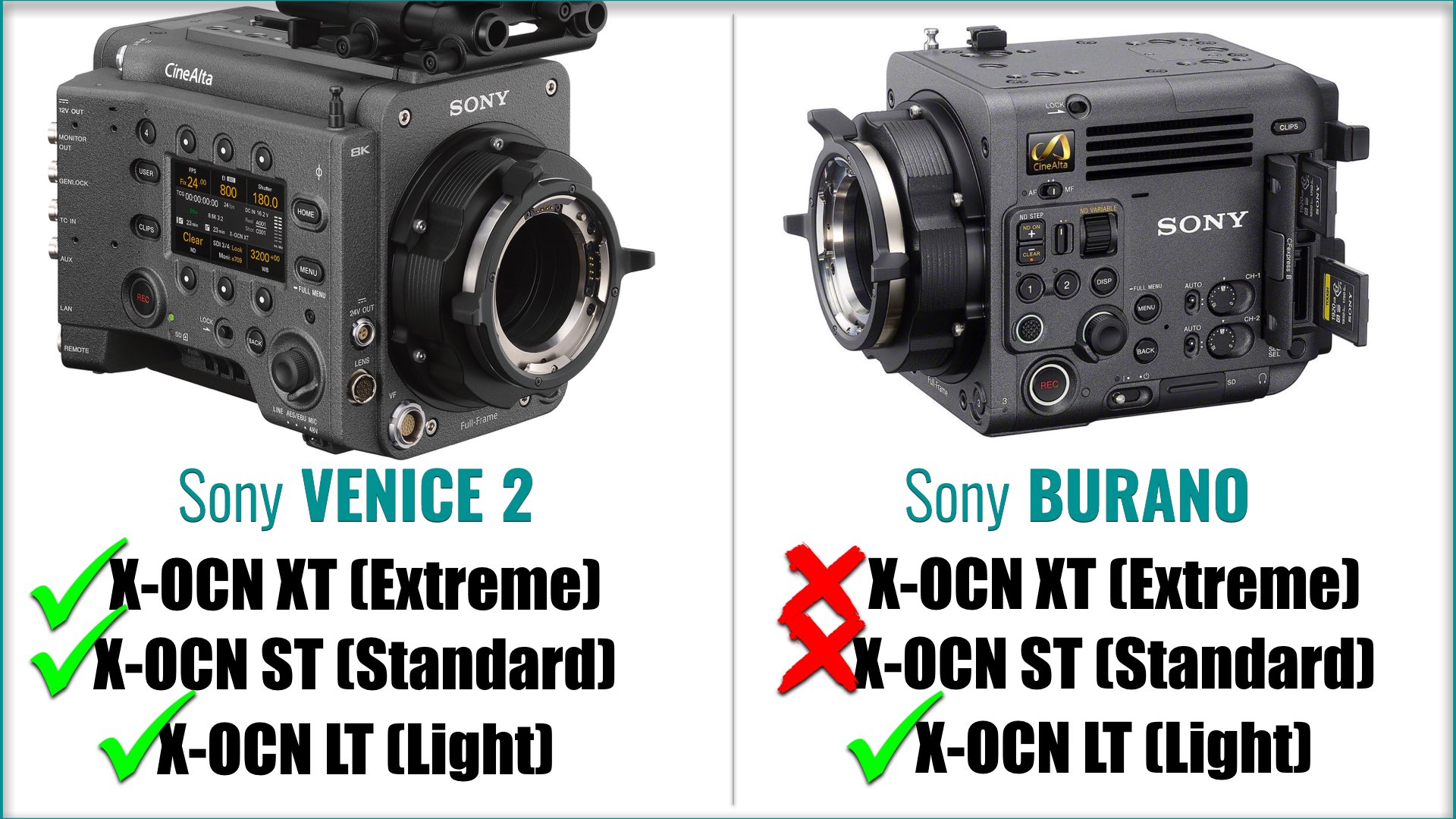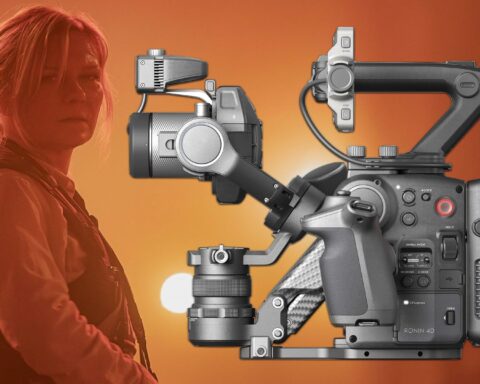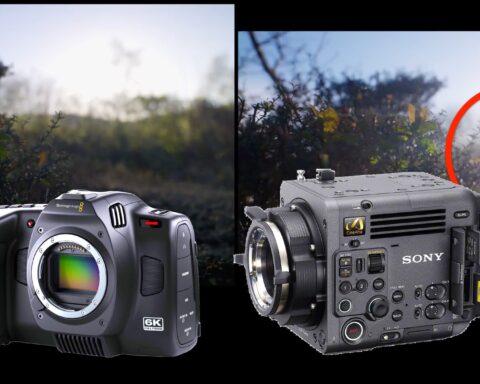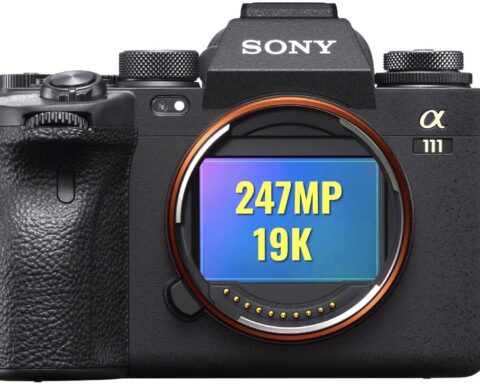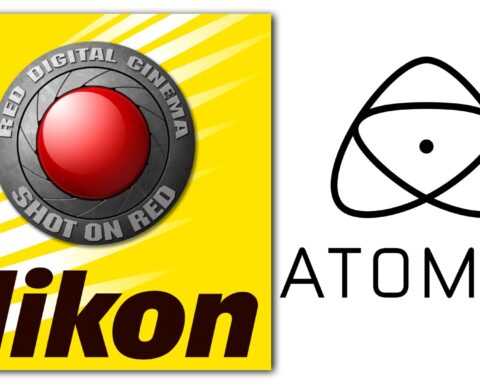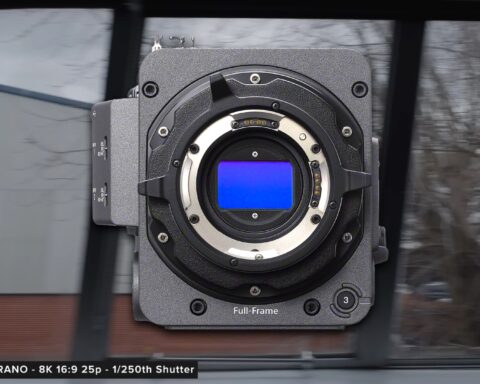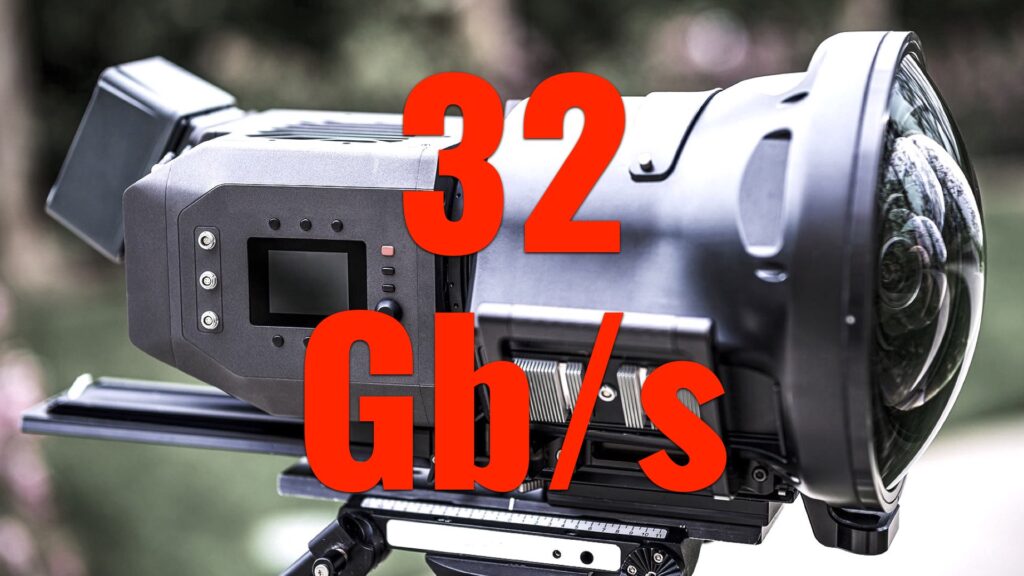One of the major differences between the BURANO and its bigger brother VENICE 2, is how they handle Sony’s flagship codec – The X-OCN released in 2016. To make the story short – The BURANO is not capable of shooting higher-quality X-OCN (ST and XT). But what does it mean exactly? Is it a deal breaker? An updated White Paper published by Sony sheds light on this interesting codec.
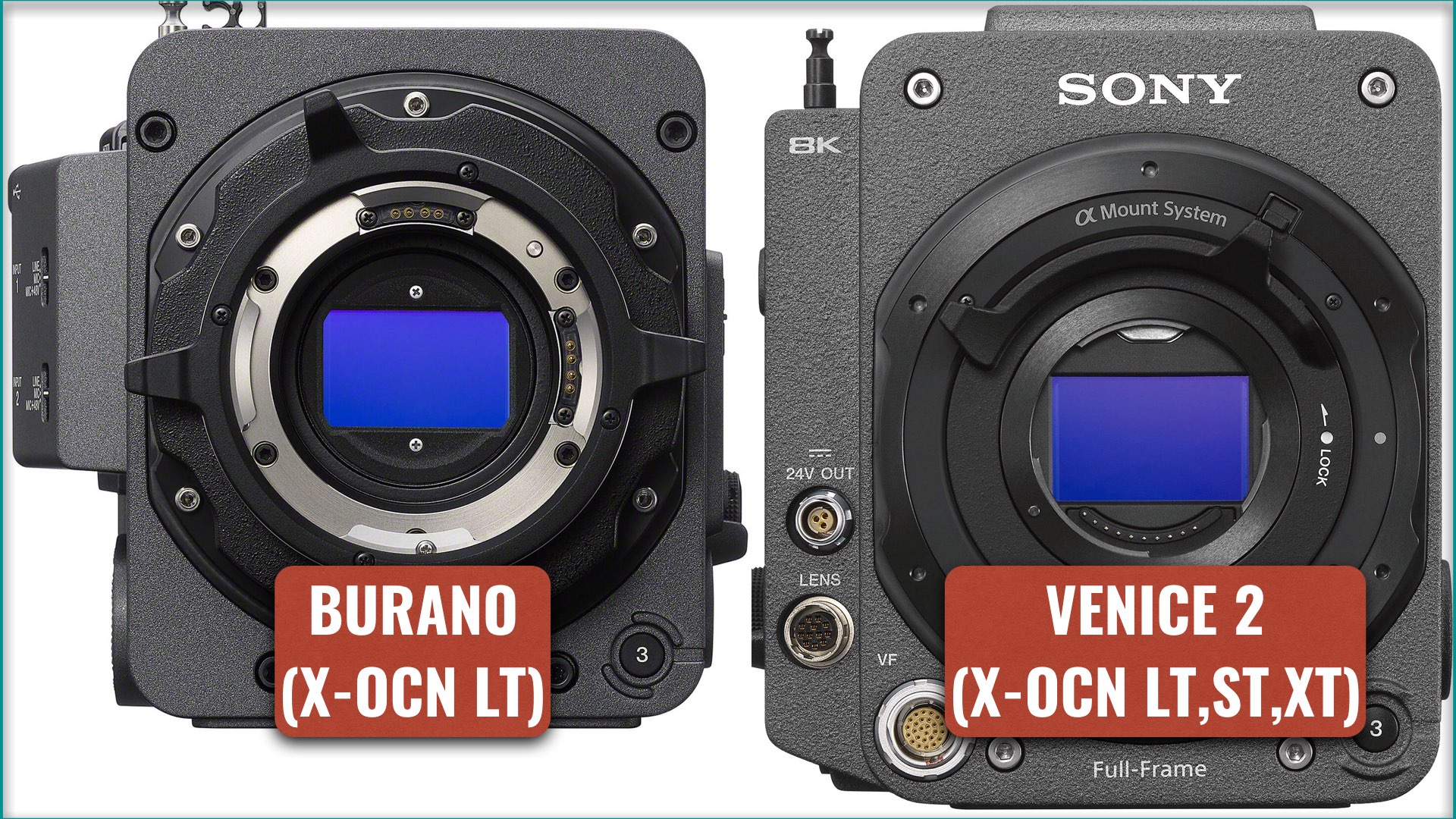
X-OCN: White Paper V1.1
After the official launch of the BURANO, Sony has updated its X-OCN White Paper (V1.1) to include more information and clarification regarding its flagship codec. Let’s dive in by explaining the essentials.
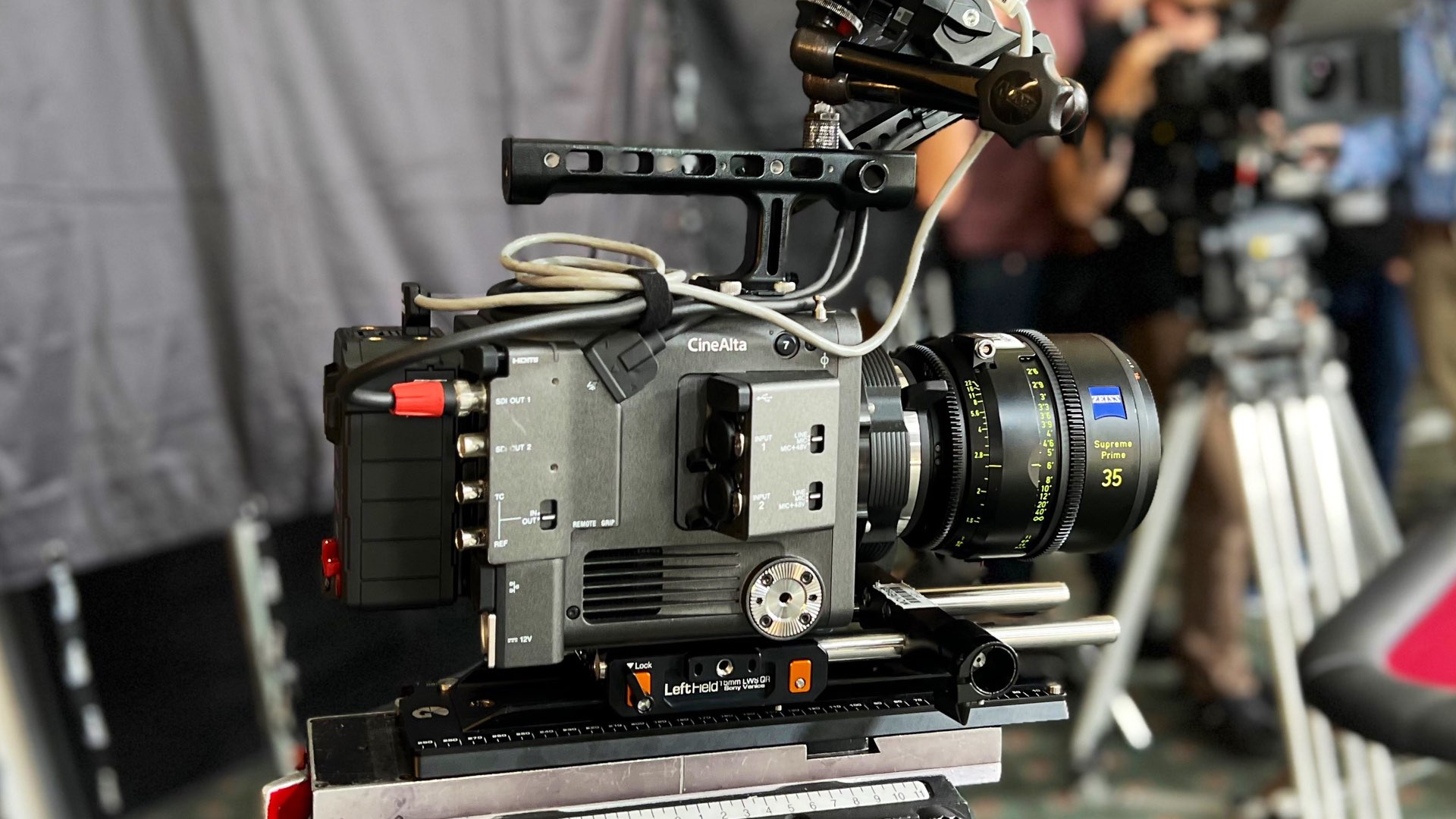
Introduction
Since 2000, Sony has been working on developing a Digital Motion Picture Camera System for the cinema industry under the “CineAlta” line for more than 20 years. Starting with the first CineAlta camera, the F900, many models have been introduced to the market until now. We introduced a lot of key technologies such as 24p, RGB444 system, Super35mm image sensor, 4K resolution in F55, and 8K resolution in F65. These models have been contributing to the high-end content creation market such as feature films, TV dramas, and commercials. In 2017, we launched the latest cinema camera VENICE equipped with a 36x24mm Full-Frame CMOS image sensor. At the same time as the development of these cinema cameras, we have introduced video formats such as HDCAM and HDCAM-SR, providing YPbPr422 and RGB444 capability. And then, we evolved the RAW format which is native signal data from the CMOS sensor before the process of generating video signals.
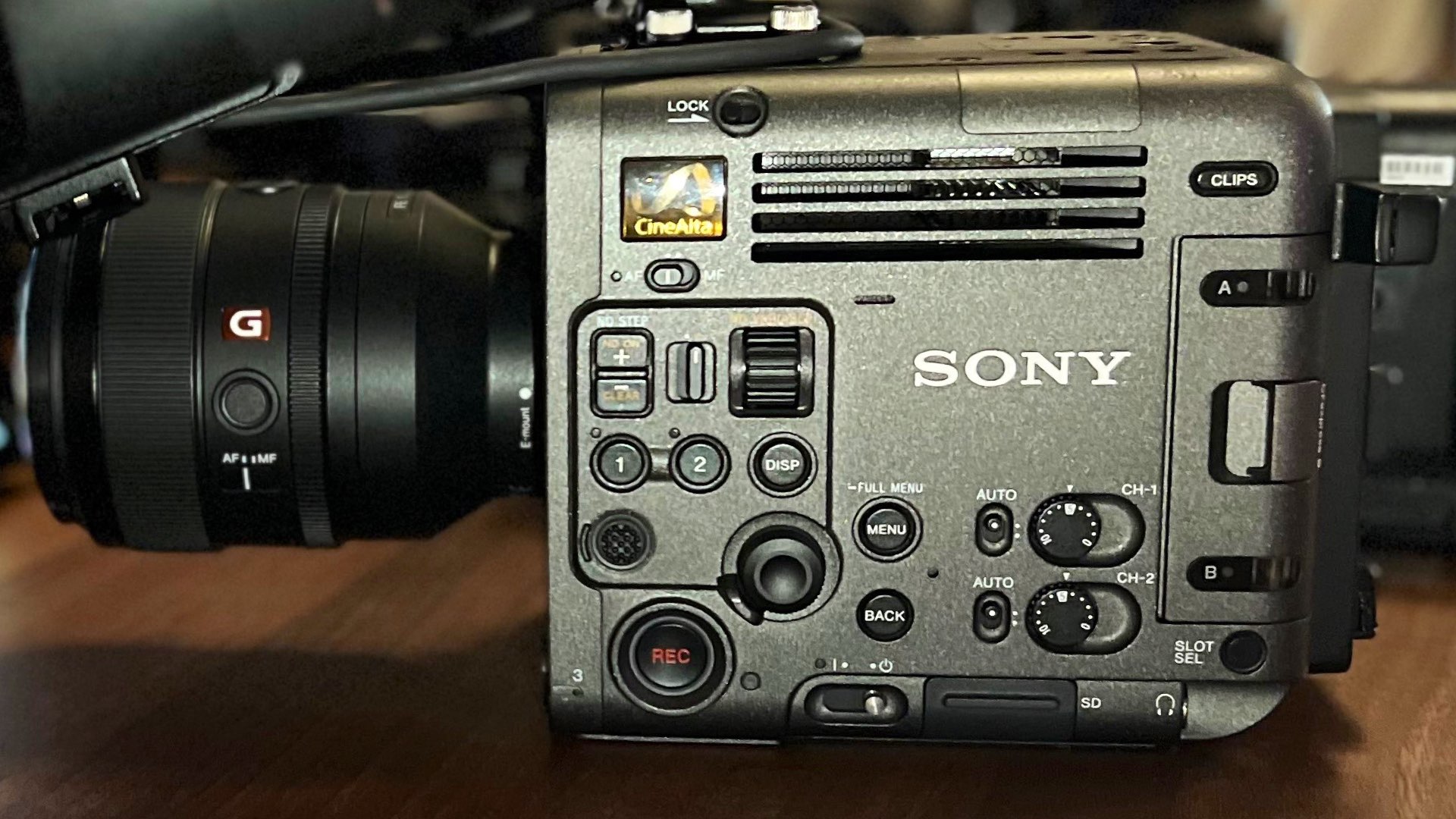
The X-OCN was presented in 2016
In 2016, Sony released a new recording format X-OCN (eXtended tonal range Original Camera Negative) – that is Sony’s original compressed RAW format. This format further enhances the compression efficiency of Sony RAW, which delivers visually loss-less image quality. X-OCN offers uncompromising image capture performance with the power of 16 bits, at low data rates. It processes the camera’s original image data by utilizing a unique algorithm from Sony.
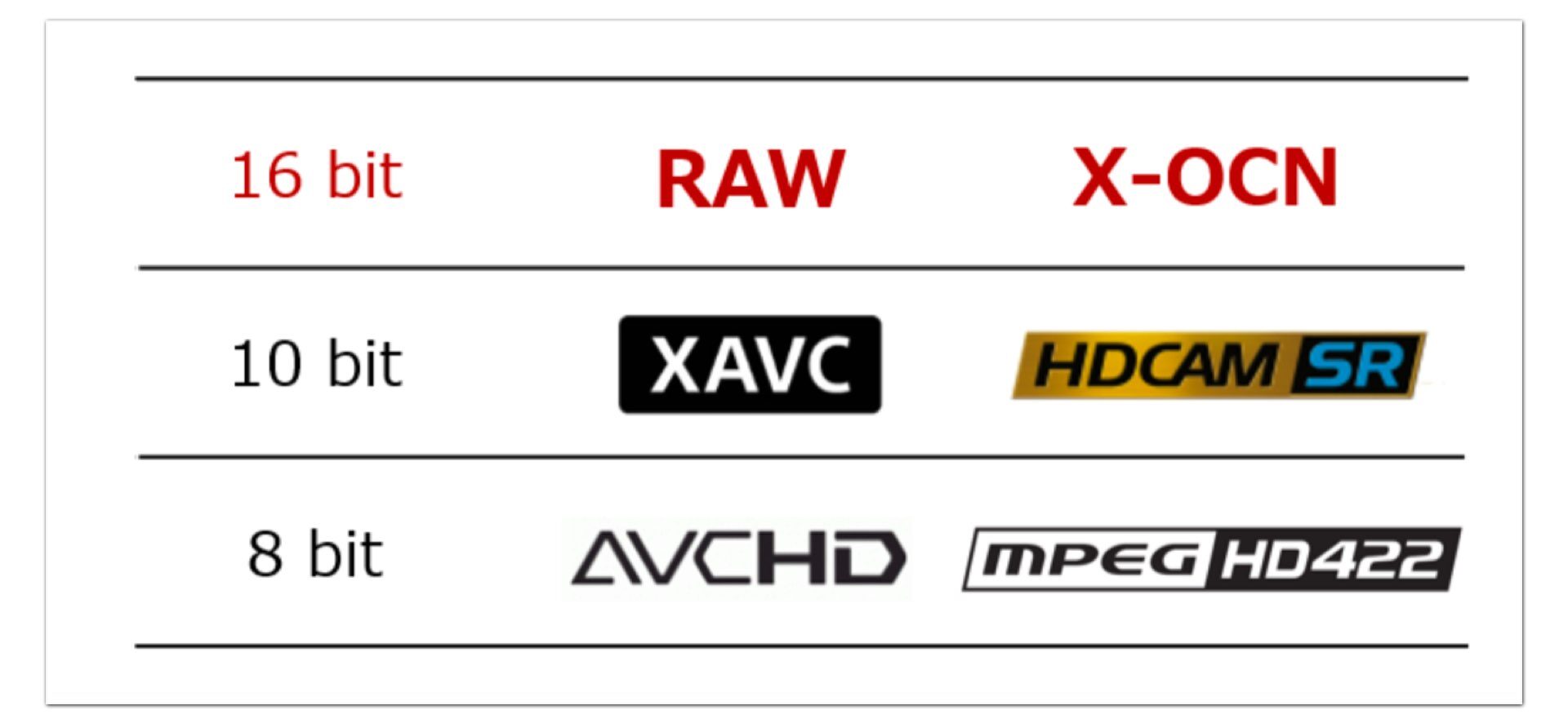
Key advantages of X-OCN
These are the major advantages of the X-OCN codec described by Sony:
- Exceptional quality with the power of 16 bits
- Smaller files, Longer recording times
- Greater decision-making flexibility in post-production
- Stable image quality with robust encoding
- Easy to work with full third-party support
Sony states: “By combining superlative 16-bit precision with surprisingly moderate bit rates, X- OCN opens up powerful new production possibilities. X-OCN produces file sizes much smaller than typical camera RAW, but unlike conventional codecs, X OCN offers 16-bit scene linear encoding. So, you get the ultimate in tonal expression, longer recording times, faster file transfers, and more economical post-production. Supported by Sony VENICE 2 (natively), VENICE, and PMW-F55/F5 cameras (in combination with AXS-R7 recorder), the X-OCN format is a game changer achieving up to 8K resolution and High Dynamic Range while maintaining reasonable bitrates”.
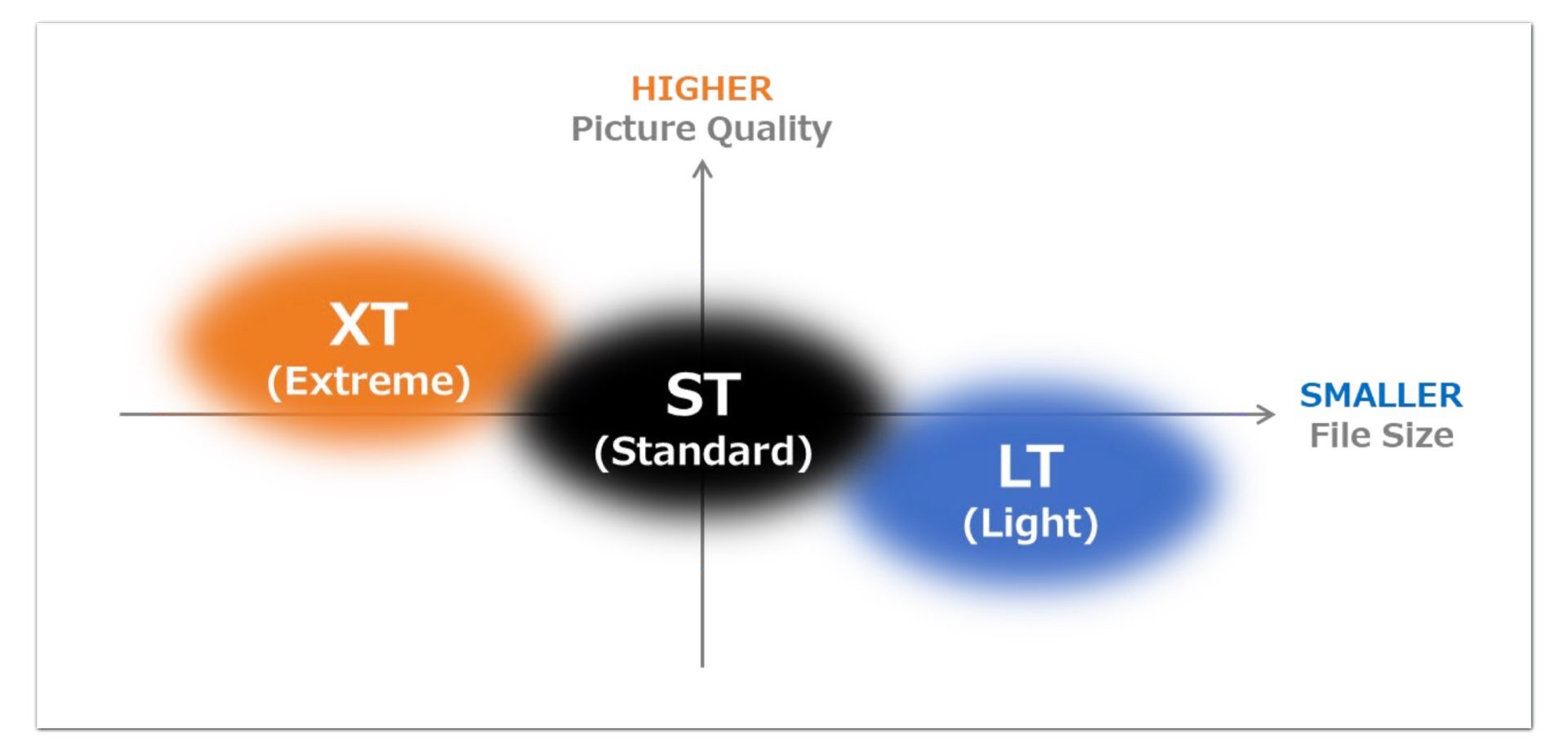
XT (Extreme), ST (Standard), and LT (Light)
The X-OCN codec is divided into three: XT (Extreme), ST (Standard), and LT (Light). Sony emphasizes that, in most cases such as Feature Films, TV Dramas, or commercials, it would recommend X-OCN ST which provides the best balance between picture quality and file transfer time/storage size. For special cases such as visual effects work or content creation for giant screens, X-OCN XT is ideal as it captures the highest quality imagery. For Mid-Low budget cinema (including TV Drama), documentaries, or productions requiring long recording time, X-OCN LT is a good option as it provides an even smaller file size than X-OCN ST – while preserving the benefit of 16-bit scene linear. Have a look at the table below which summarizes all three X-OCN flavors and their goal: (Note that according to Sony, X-OCN XT exceeds Sony RAW quality).
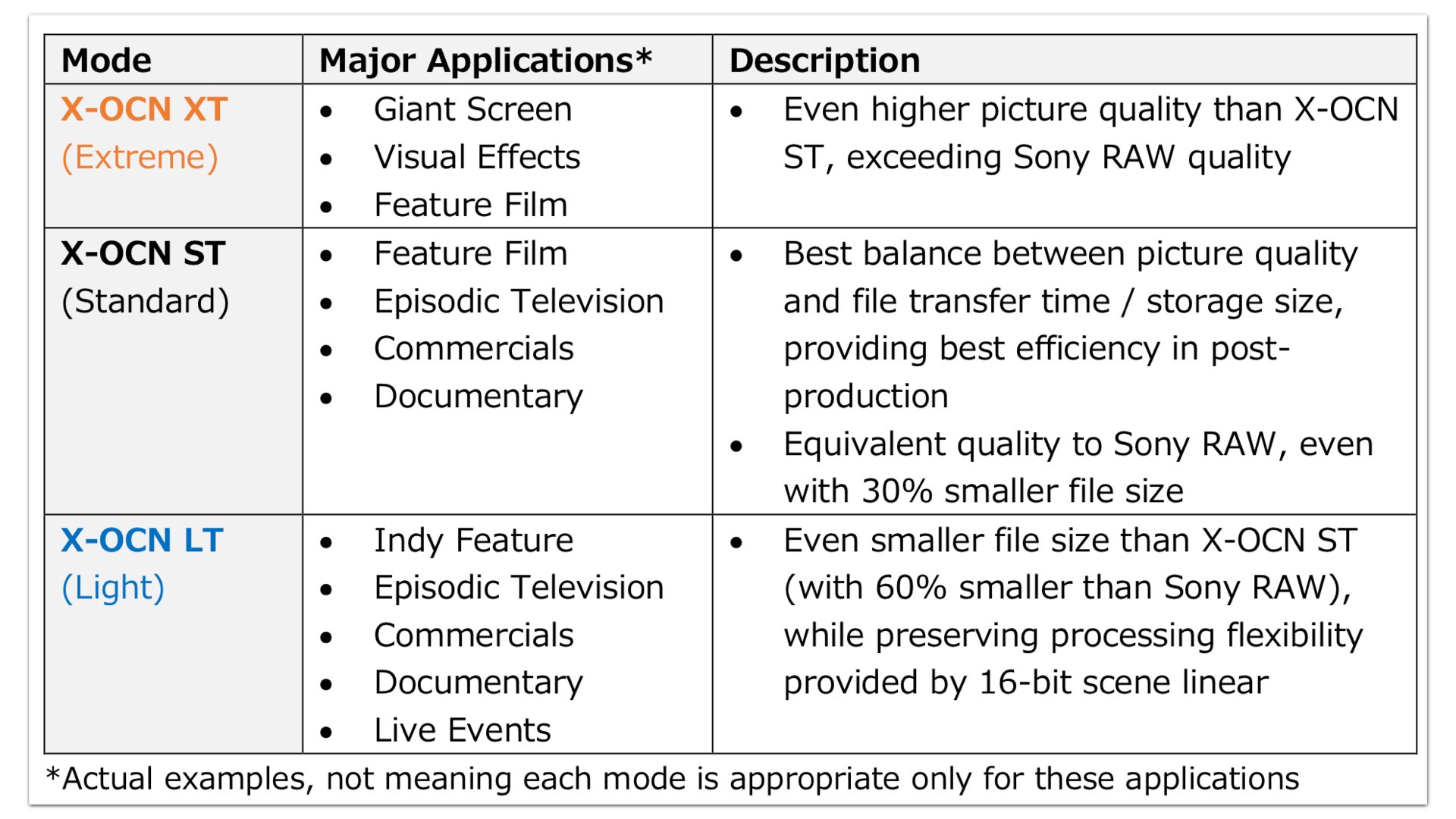
Bitrate Comparison
As for the bitrates, check out the charts below made by Sony:
Bitrate Comparison at 4096 x 2160 / 24p
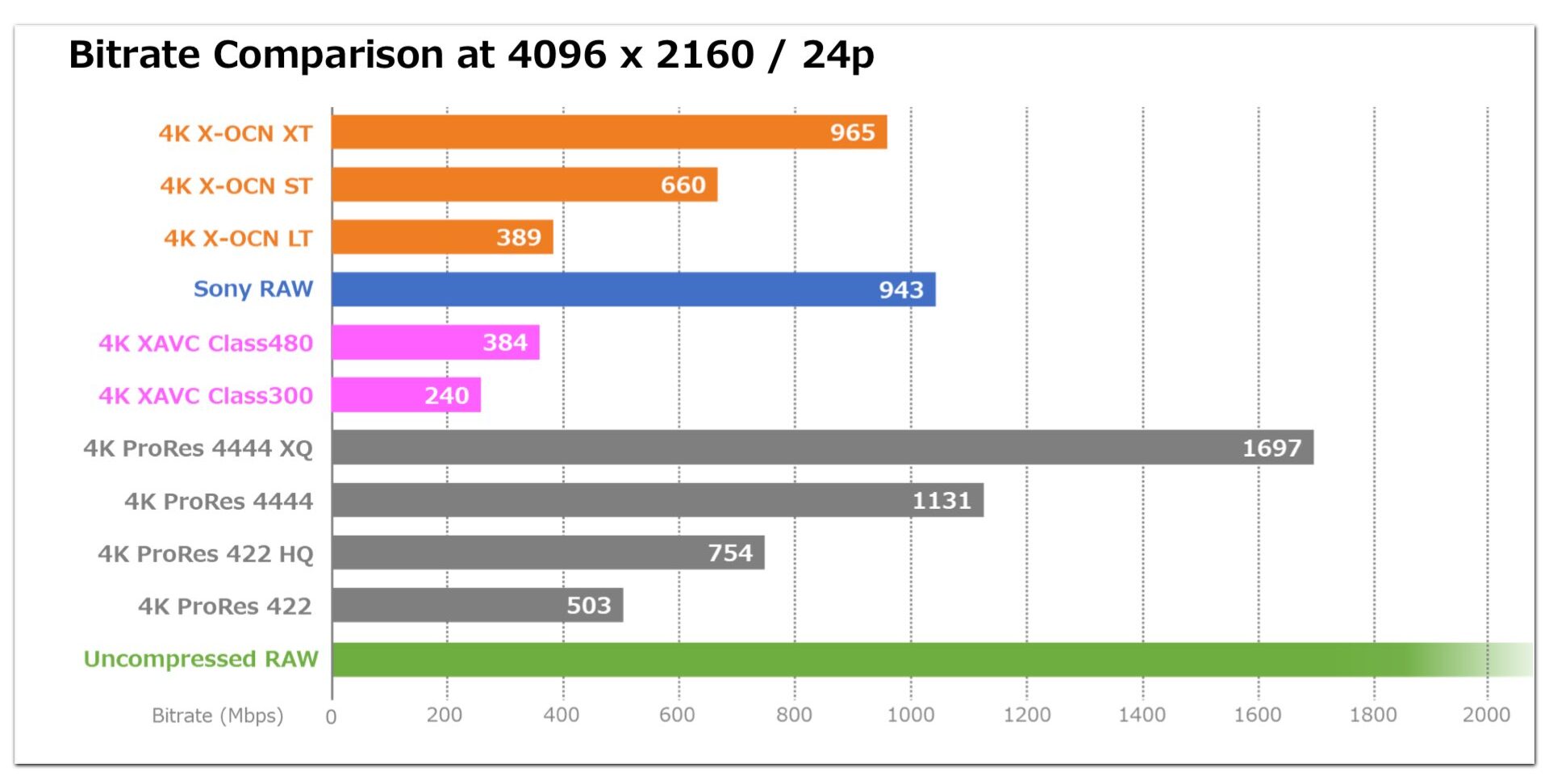
Bitrate Comparison at 8192 x 4320 / 24p
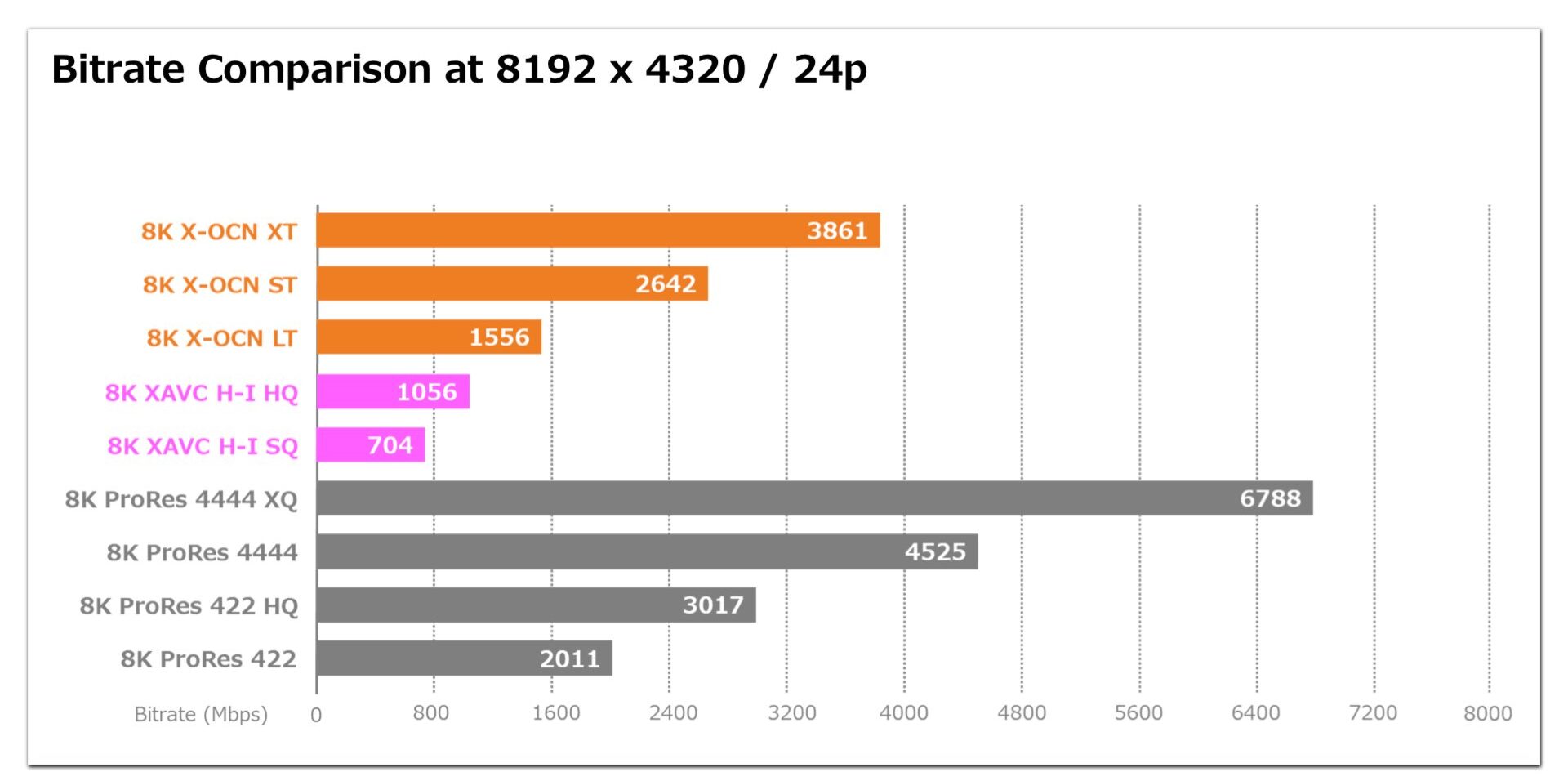
Note the comparison to ProRes. The X-OCN LT has a lower bitrate even when compared to ProRes 422. Indeed, Sony mentions that X-OCN files are computer-friendly, allowing for fast workflows even with modest post-production hardware.
Wrapping up
Despite its compact dimension, the BURANO offers internal recording of X-OCN LT (Light), as well as the new XAVC H and XAVC-I. BURANO also features 10-bit S-Log3 with XAVC H- HQ recording at 1,200 Mbps, and XAVC H-I SQ recording at 800 abs for 8K30p. However, the BURANO is NOT compatible with X-OCN XT (Extreme) and X-OCN ST (Standard) recording formats. On the other hand, the VENICE 2 is built upon X-OCN’s proven success by offering internal 16-bit X-OCN ST and especially XT recording formats without the need for an external recorder, dramatically shrinking the form factor while still offering the full dynamic range and color reproduction of the sensor. Hence, that would be ideal for the most advanced workflows, including ACES, Rec.2020, SMPTE ST2084, the extended color space of Sony’s S-Gamut3 color, and High Dynamic Range tone mapping. Therefore, that is one of the main differences between the BURANO and the VENICE 2. We can say that the X-OCN ST and XT on the VENICE 2, prevent product cannibalization by BURANO, and for that, the BURANO will not get these codec flavors on a future firmware update. Judging from the table, the BURANO is aimed to be used on indie features, episodic televisions, commercials, documentaries, and live events, whereas VENICE 2 is built for, giant screens, visual effects, and feature films. Thus, the flavor of the X-OCN can dictate the utilization of the Cine Alta camera.
Product List
Here are the products mentioned in the article, and the links to purchase them from authorized dealers.
- Sony BURANO 8K Digital Motion Picture Camera


